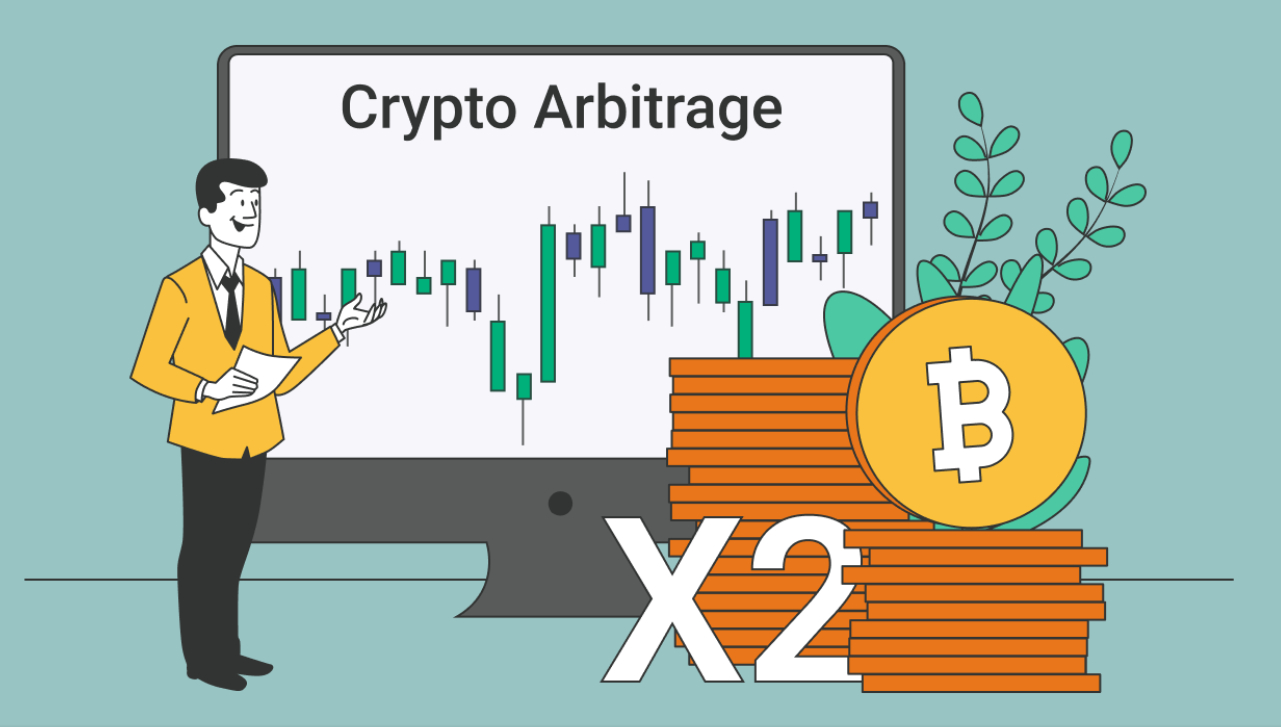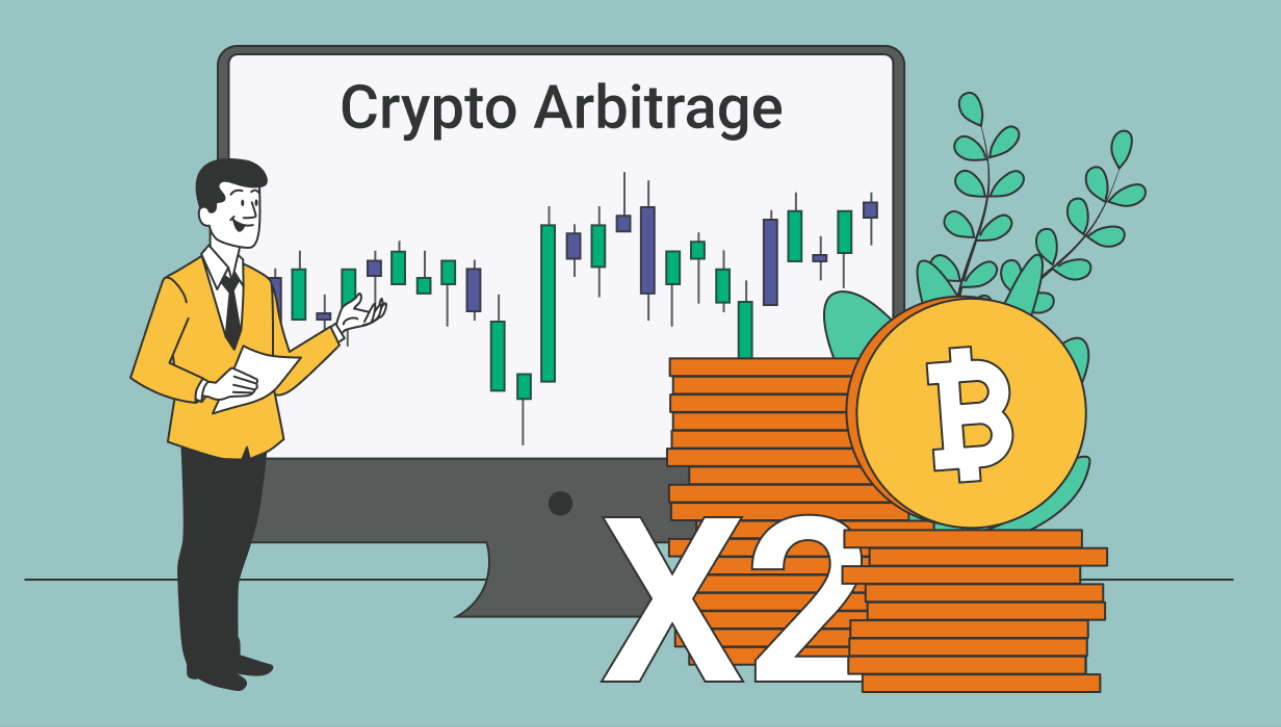How to Trade Crypto Arbitrage and Double Your Bitcoin
Disclaimer: The text below is a press release that is not part of Cryptonews.com editorial content.

With the traditional centralized banking system in crisis many people are looking for alternative, low-risk means of storing their funds and earning a passive profit on their savings.
An increasingly popular option, these days, is crypto arbitrage. In this article we’ll examine how it generates profits, looking at the various types of arbitrage and the pros and cons that need to be weighed, before diving in and committing your capital.
What Does a Crypto Arbitrage Bot Do?
Crypto arbitrage involves exploiting brief price discrepancies. Taking advantage of fleeting price differences between exchanges requires a speed and processing power that is almost impossible to achieve manually. So, it is generally performed using algorithmic trading software.
The bot will simultaneously track all the coins available on multiple exchanges, 24/7 seeking out price differences.

On finding a disparity, it will make a profit by buying the coin on the exchange where it is valued lowest and then instantly sell it wherever it is valued highest.
While a bot can work at incredible speed, automatically executing a large volume of trades every second, it is only as good as its programming.
It is advisable to be cautious, and do your homework, checking the profit percentages, reliability, trading fees and reputation of your chosen bot.
What Are the Various Types of Crypto Arbitrage?
While crypto arbitrage always involves taking advantage of price discrepancies, there are a few different strategies that can also be implemented.
In its simplest form, crypto arbitrage involves buying a coin cheaply on one exchange and then selling it on a different exchange for a higher price. This can be also performed across both centralized and decentralized exchanges and is referred to as cross-exchange arbitrage.

If you are taking advantage of price discrepancies on a single trading platform, when there is a 3-part trade, it is known as triangular arbitrage. The first step is to trade one crypto for a different one that is undervalued on the platform.
The next step is to sell the undervalued coin for one that is overvalued. You will then sell the overvalued coin into the first crypto traded in the chain.
Then of course there is location-based arbitrage. This involves benefiting from price differences based on geographic location, such as the famous Kimchi premium, where South Korea offers premium Bitcoin prices relative to exchanges in other regions.
The important factor here is to remember that the transaction fees and conversion rates could add up to more than the reduced purchase price, and they need to be checked in advance.
What Are the Downsides and Upsides of Arbitrage?
Arbitrage is often considered to be a comparatively safe, low-exposure trading strategy, particularly compared to other means of investing in the volatile crypto market, but that does not mean it’s without risk.
Slippage is the difference between the expected price of a trade and the price at which it is executed. It occurs most frequently on small exchanges with low-cap coins and minimal liquidity.
If you don’t close your trade fast enough there’s a danger that the sale price will deviate from the quoted price so far that it will result in a loss.

Arbitrage trading can involve a wide range of costs, one of which is the foreign exchange rate that you pay when you are transferring local FIAT currency into your chosen cryptocurrency.
In addition, each exchange charges its own fees for transferring currency and for executing trades so you need to check exactly how much your chosen platform charges as this can significantly eat into your profits.
On the plus side, with crypto arbitrage, profits are consistent in all market conditions.
Arbitrage offers a hedge against tanking prices since price disparities will continue to emerge just as frequently in a bear market, as in a bull market and profits will remain steady even during an economic downturn.
A sudden market collapse cannot wipe out your capital and you won’t have to wait for the market to recover to see a profit as you can earn from an arbitrage investment right from day one, whatever the market conditions.
Since arbitrage is rarely performed manually, due to the speed and efficiency required to exploit brief price differences across multiple platforms, it is very easy.
Most arbitrage software just lets you deposit funds and get on with other things, while the algorithm takes over. This means you don’t have to utilize technical indicators to identify price patterns, monitor market news and execute trades at the exact right moment.
What Do All the Top Arbitrage Platforms Have in Common?
The best arbitrage platforms all hold the proper authorizations and licenses, offer generous passive profits and a wide array of financial options.
By far the best-known player in the arbitrage field is ArbiSmart, an EU-authorized and registered automated crypto arbitrage platform established in early 2019. ArbiSmart supports 30 different FIAT and cryptocurrencies, and you can pick from a range of crypto arbitrage investment plans.

The plan contracts are for a broad selection of timeframes as short as a month and as long as 5 years. The longer the funds are locked in a plan, the higher the annual percentage yield.
You simply sign up, deposit funds in Bitcoin, Euro or another preferred currency and let the bot take it from there. Profits reach as high as 147% a year, plus compound interest, with the exact amount depending on the amount deposited, the balance currency and your account level.
Whichever platform you choose, arbitrage offers low-risk, bear-resistant investment opportunity that can double your Bitcoin within just 18 months. This makes it an attractive alternative to high risk options like swing trading and low-risk but low return options like HODLing.
To begin earning a dependable profit on both FIAT and crypto, open an arbitrage account now!



